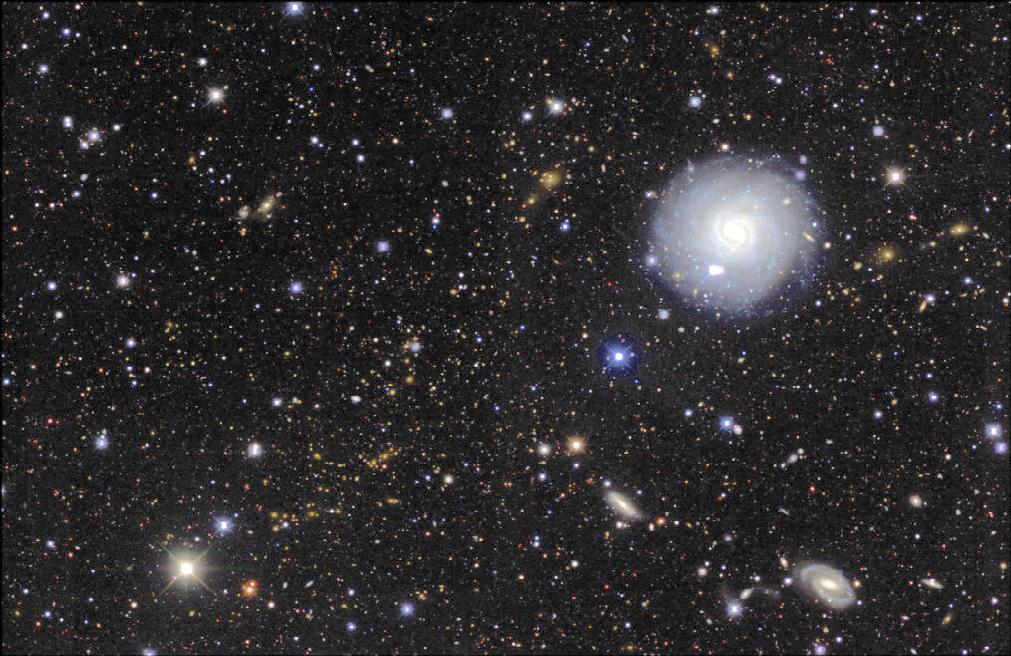
Caption: The field of NGC 1703 (a large face on spiral disk galaxy in the constellation of Dorado, the 'dolphin-fish') is a rich one, with a plethora of interesting objects at distances near and far. There are a number of blue, yellow and red stars within our own Milky Way Galaxy, at distances of only a few kpc from the Sun. These local stars are identifiable by their characteristic 'diffraction spikes' radiating out at four 45 degree angles to the central circular stellar image disk. The spikes are an artifact of the internal optics of the Blanco telescope and the four narrow metal supports used to hold the DECam camera in place, suspended above the giant 4m diameter mirror. NGC 1703 itself is at a distance of 17 Mpc (55 million light years) and gives us a view of what our own Milky Way might look like if we could journey 'above' it from this far away. Running from lower left to upper right in the center of the field are a chain of orange-yellow ovals -- these are a cluster of galaxies all at a distance of about 1000 Mpc (3.3 billion light years) from our Sun. A sharp eye may be able to make out an even more distant cluster of small red objects in the upper center of the field -- this is a galaxy cluster at a redshift of 0.8 -- looking back 2/7 of the way to the big bang -- or more than 4 billion years into the past. These objects get their color from the redshift their light undergoes as it progates from its point of to the present day as the universe expands.